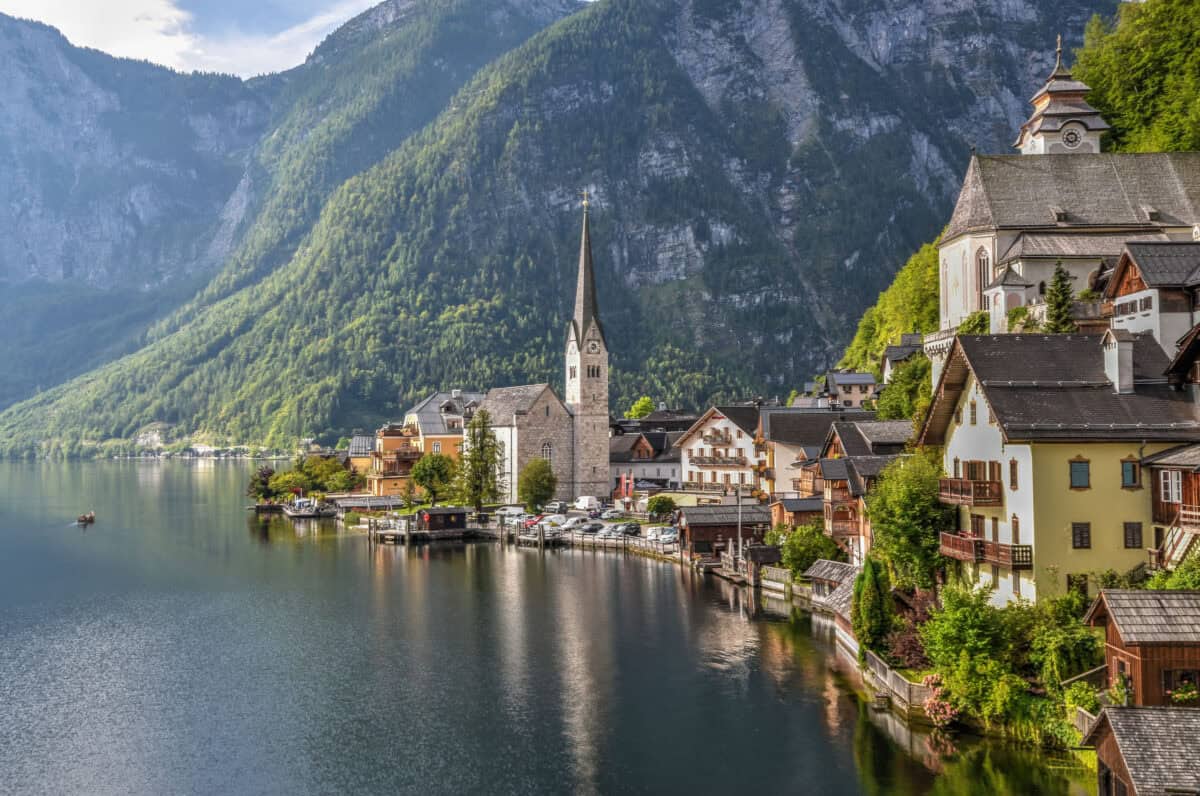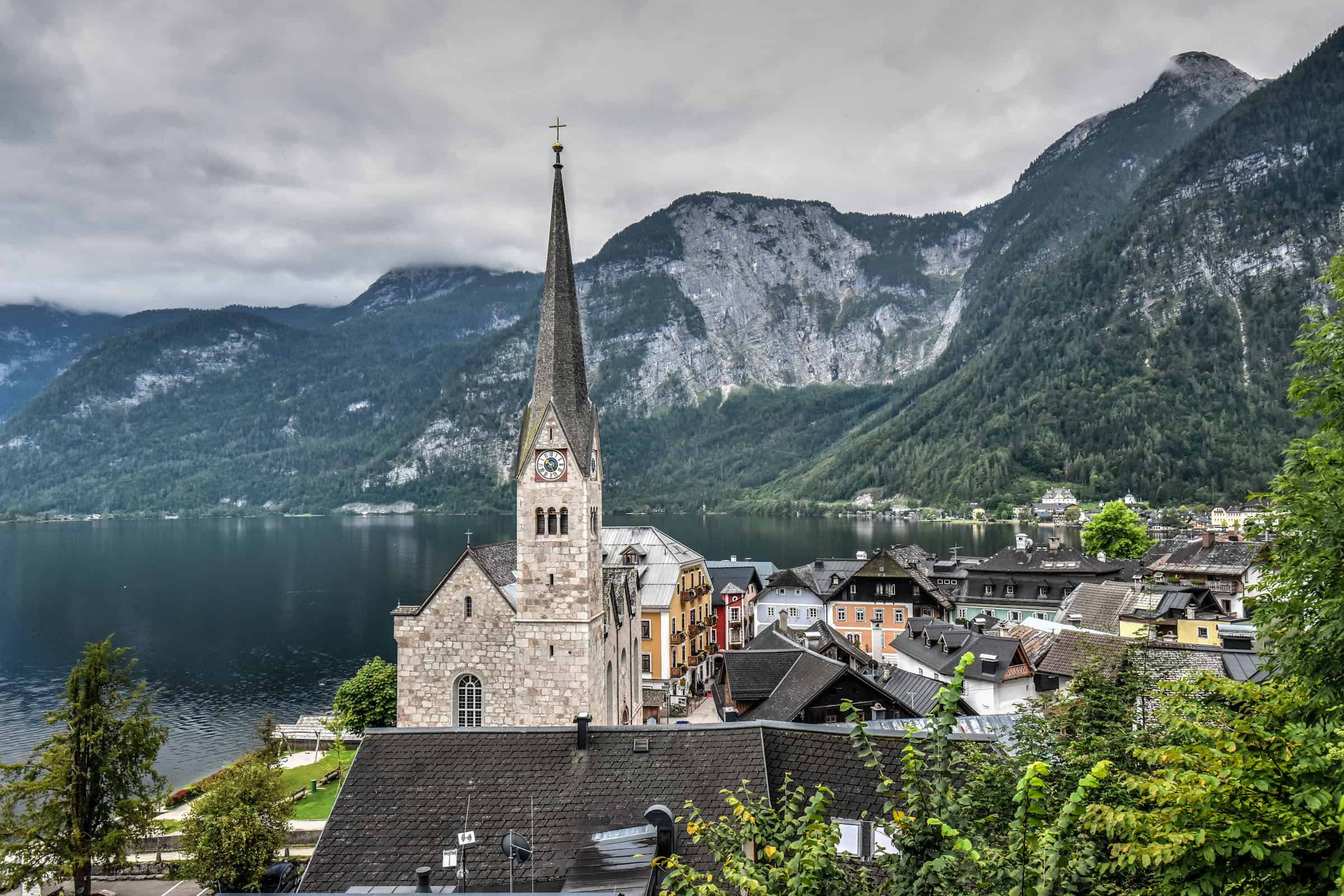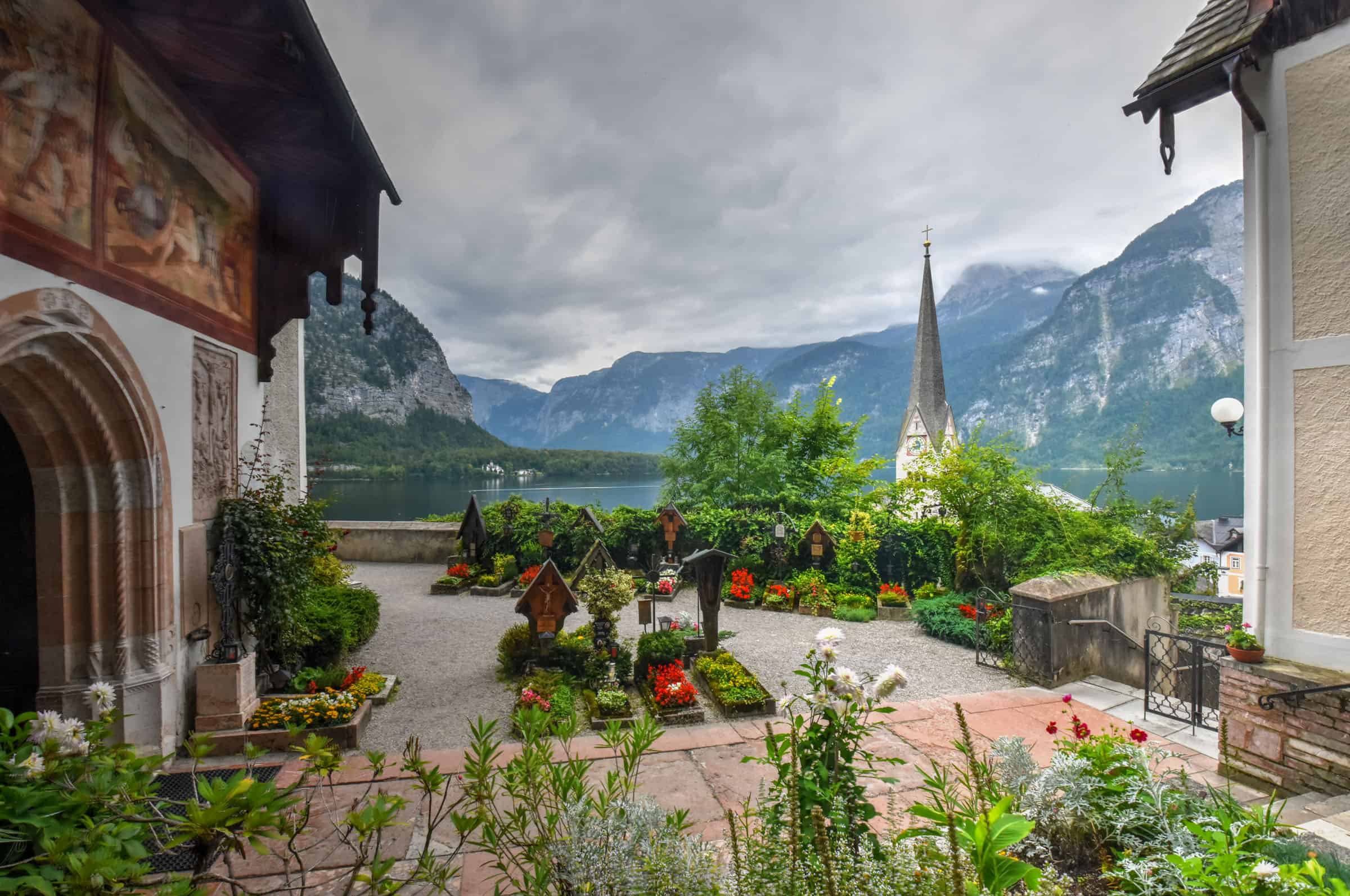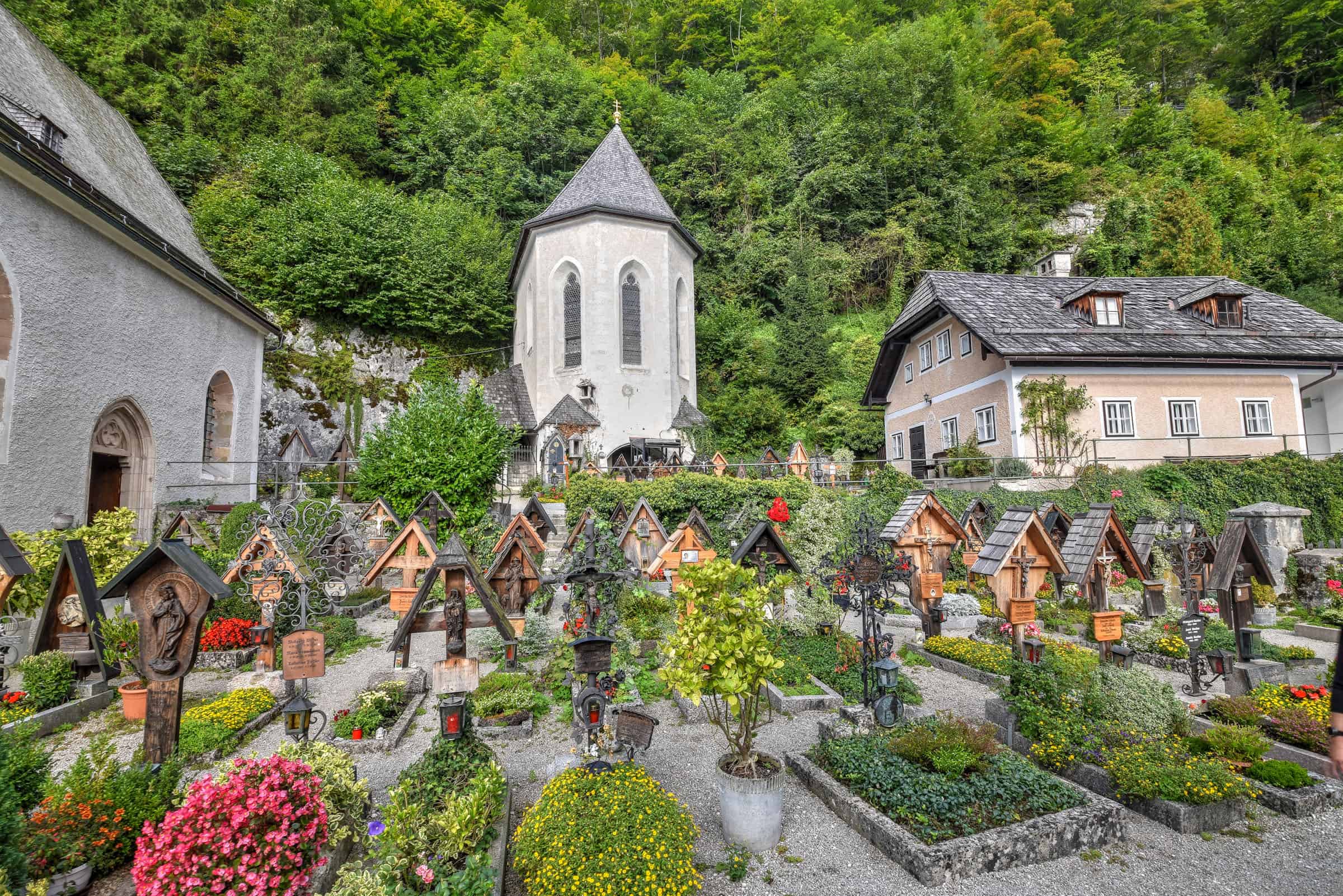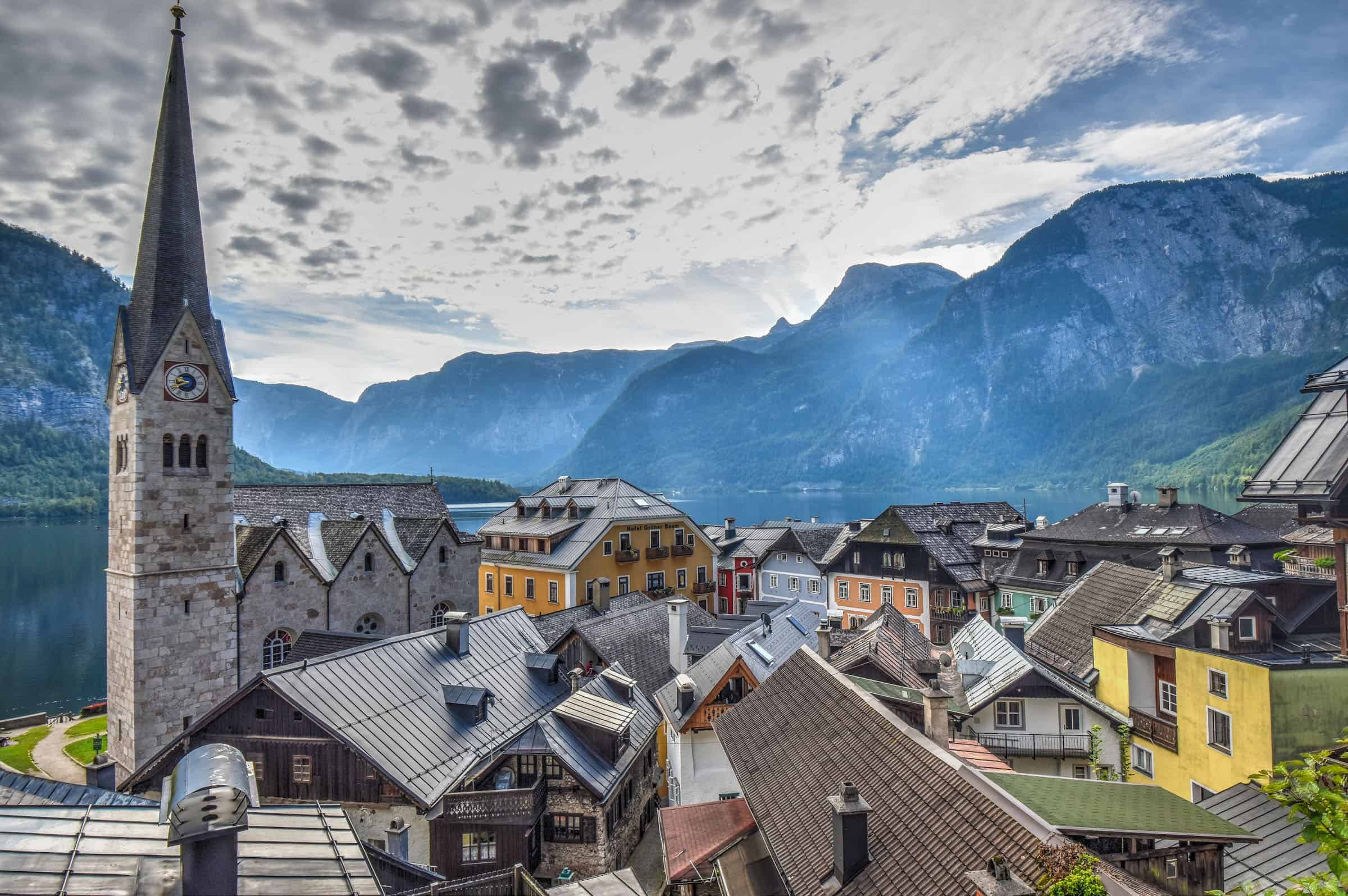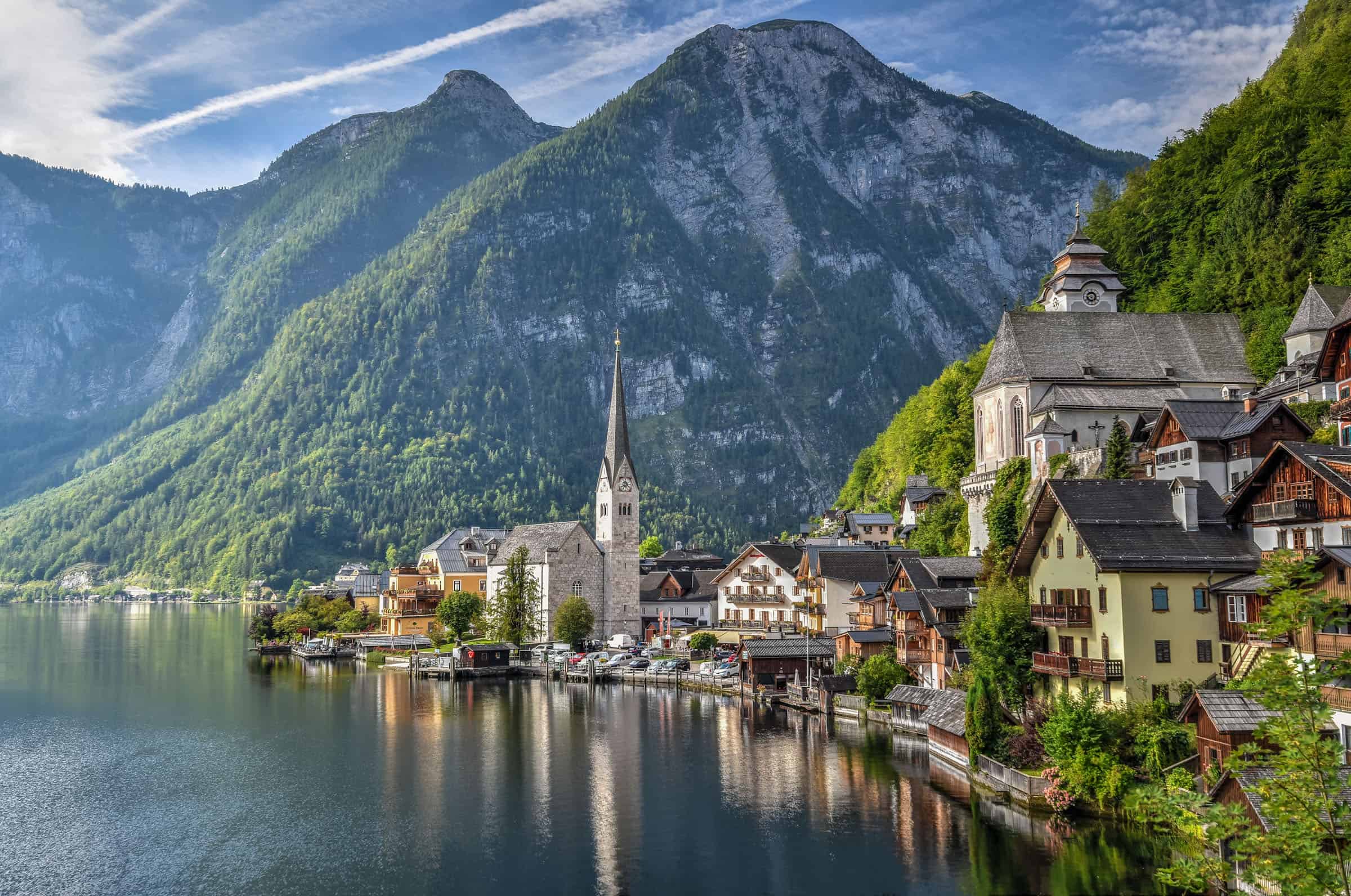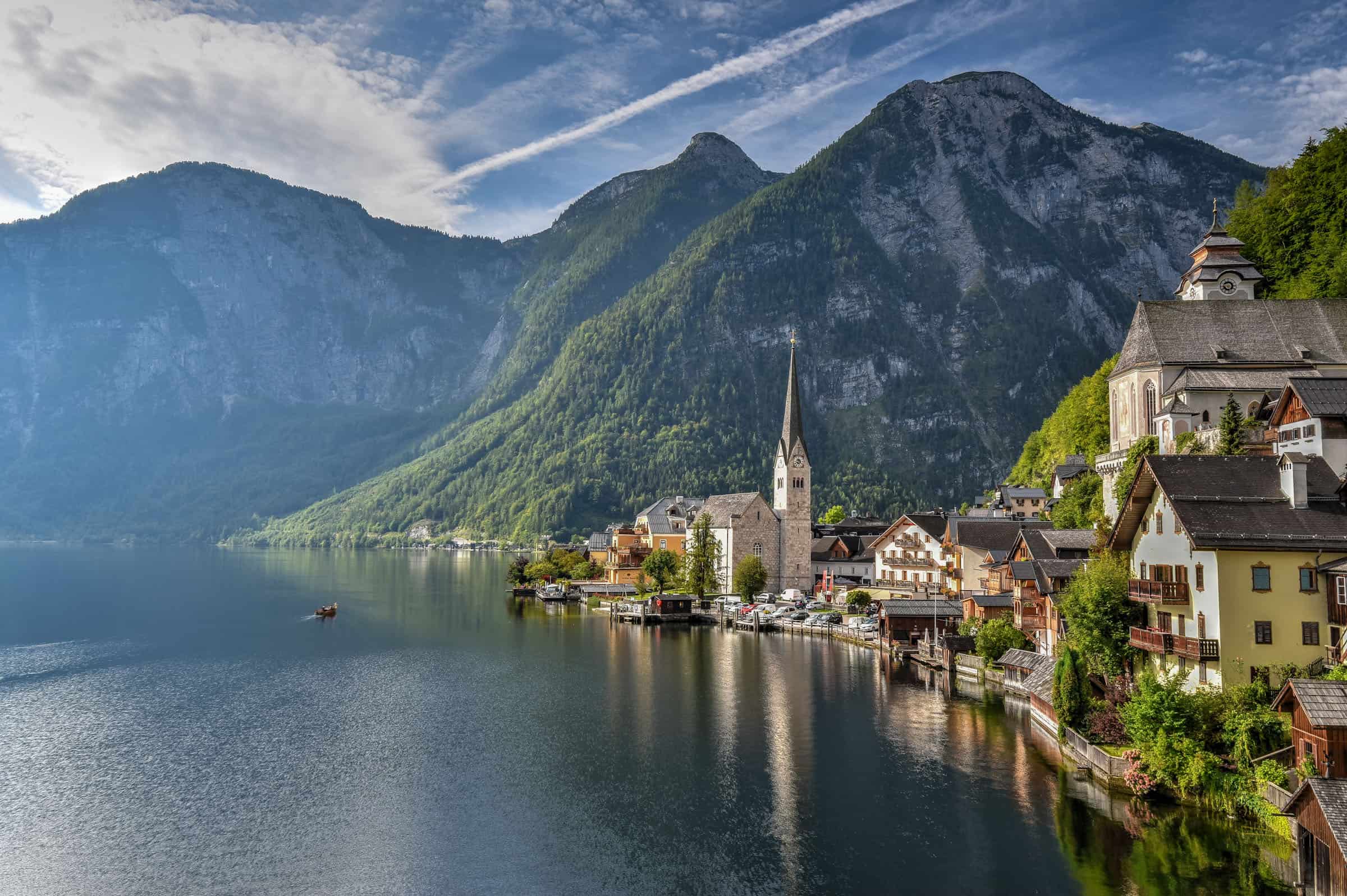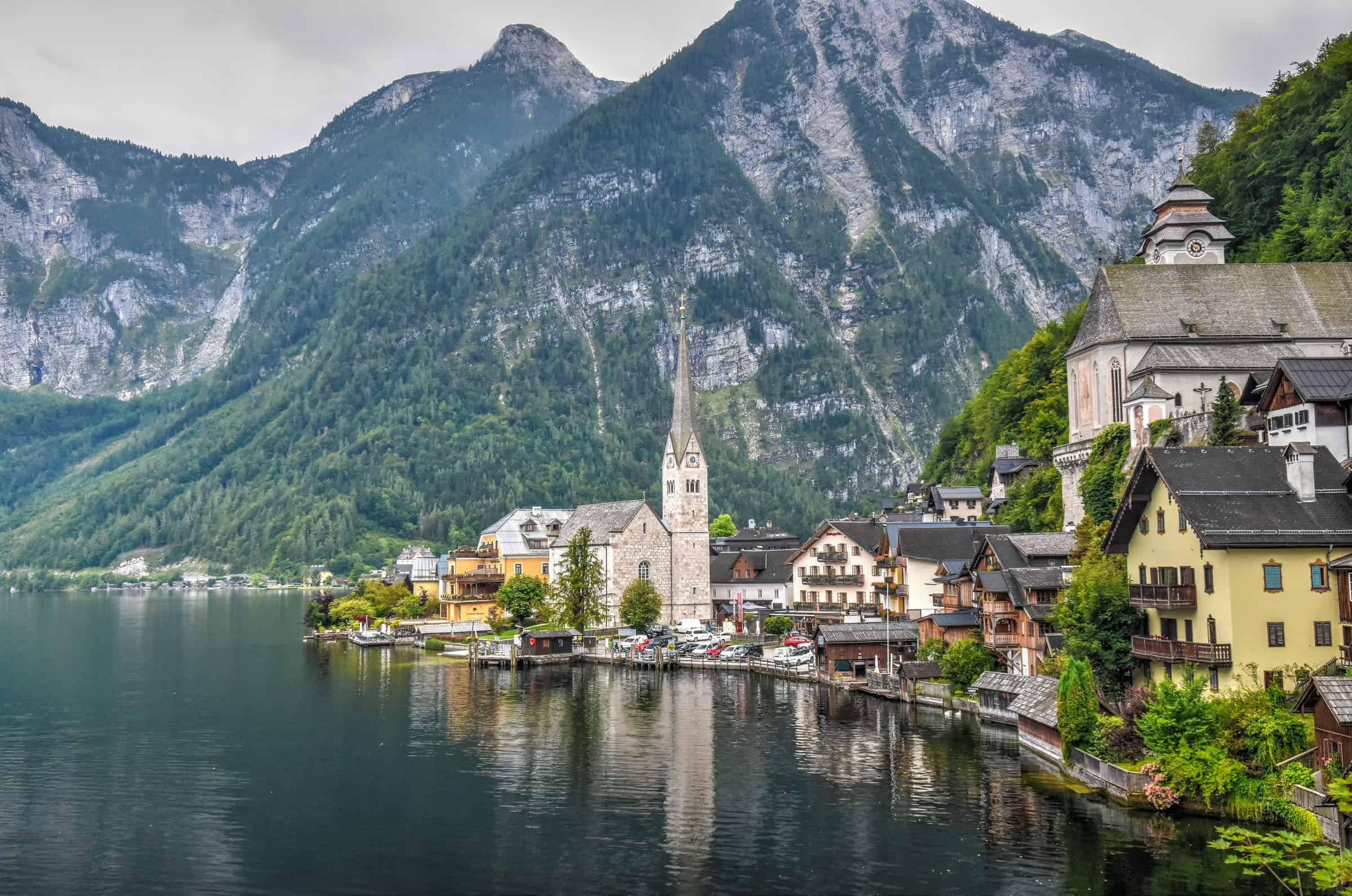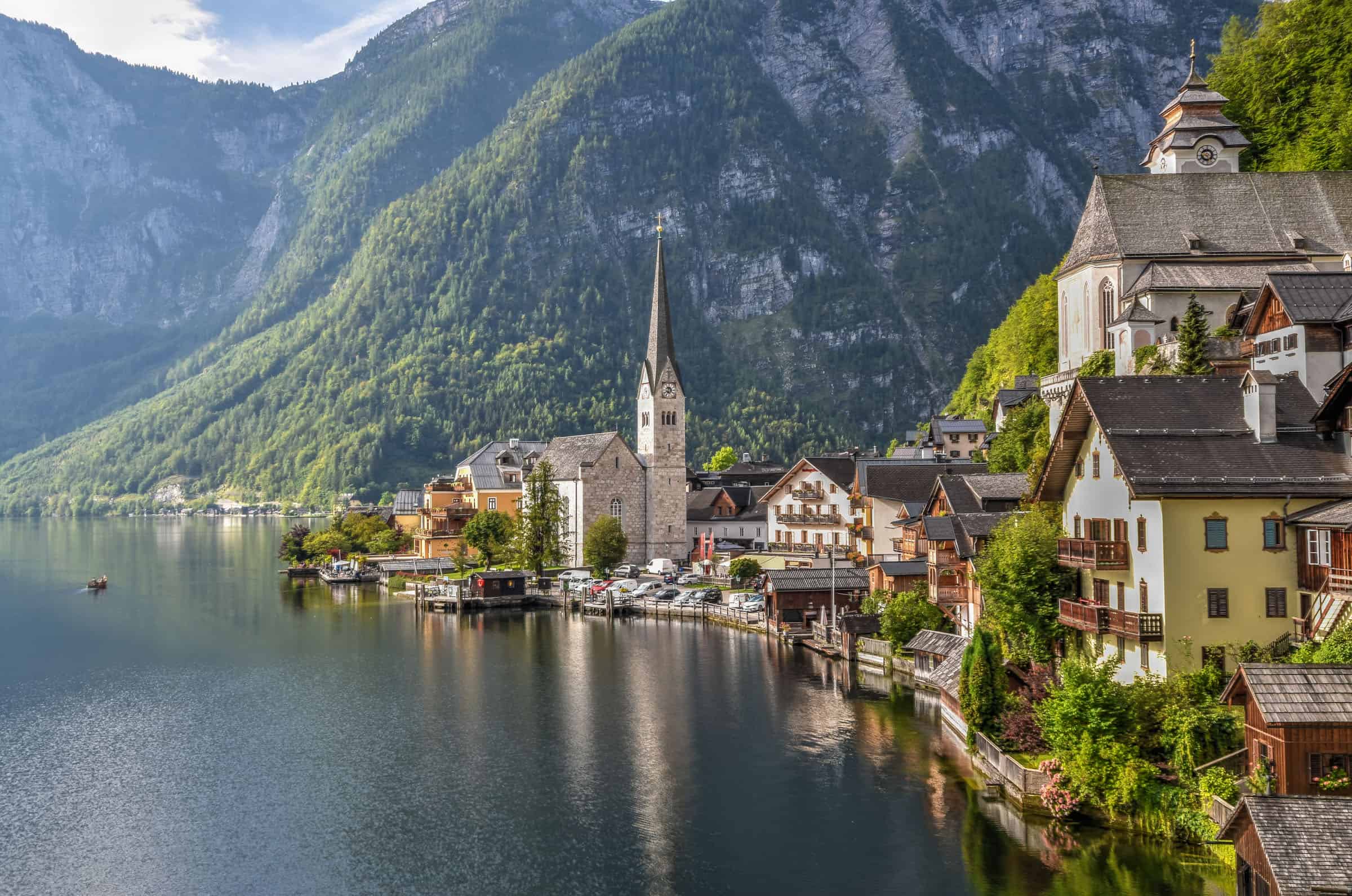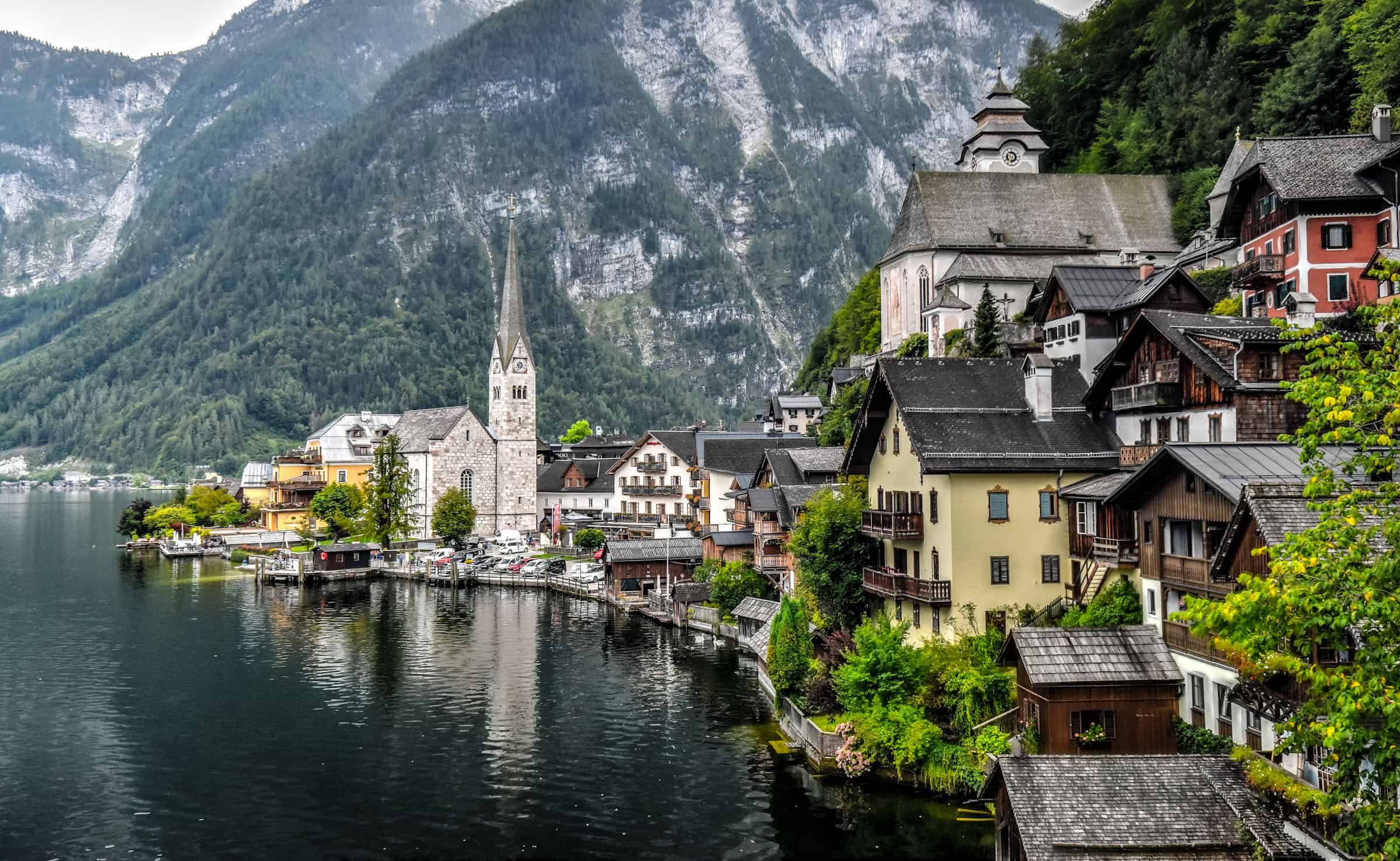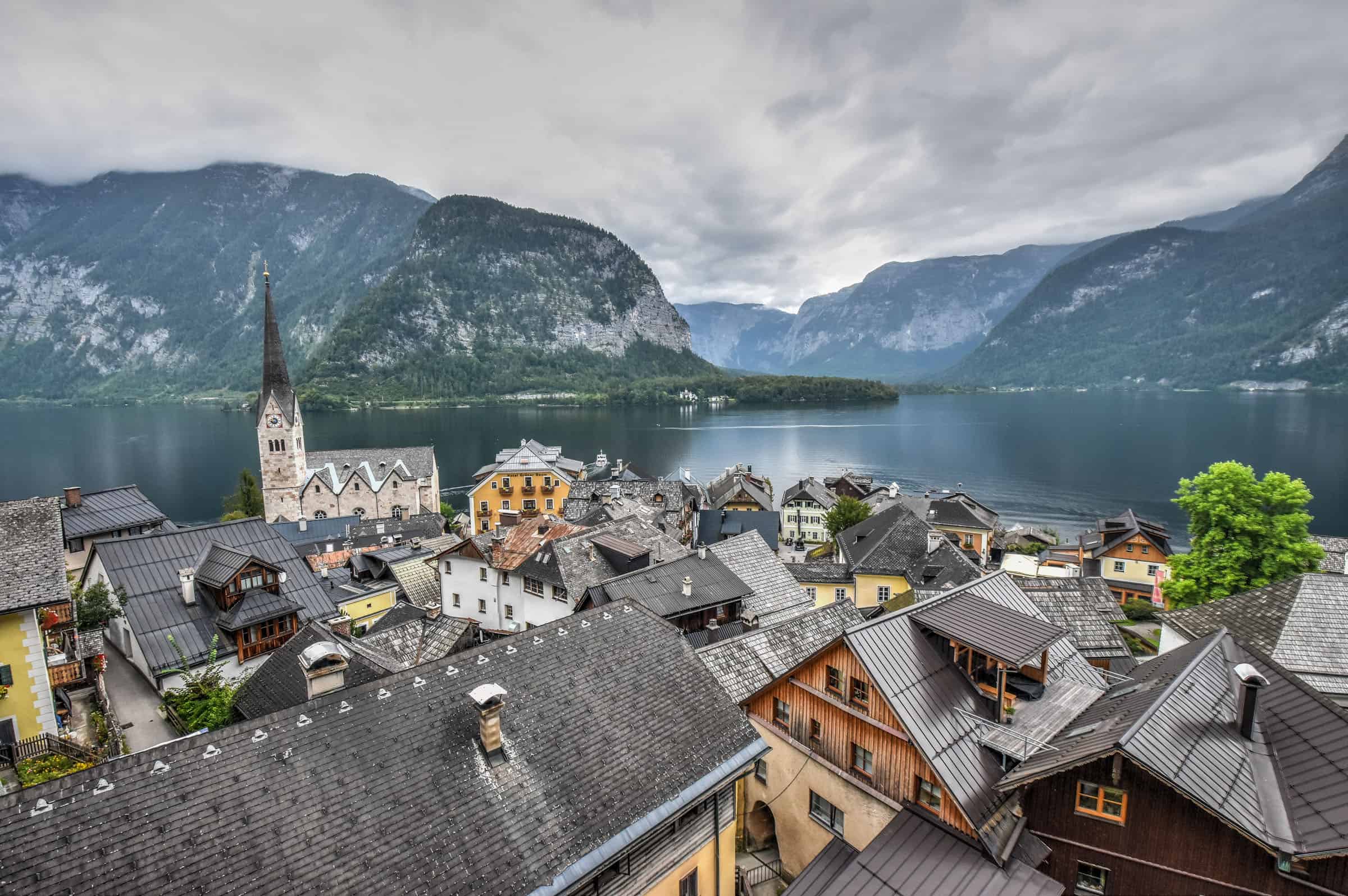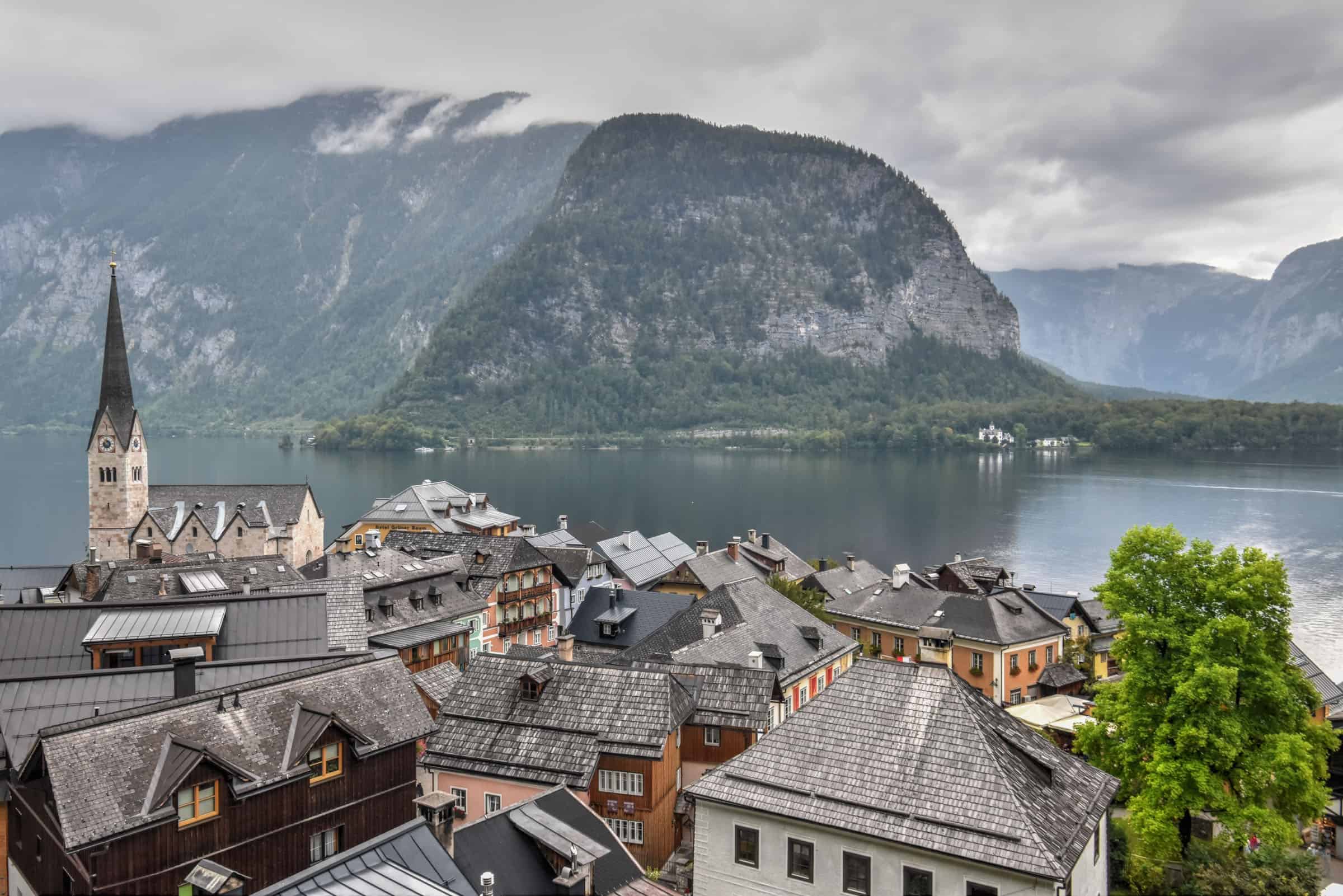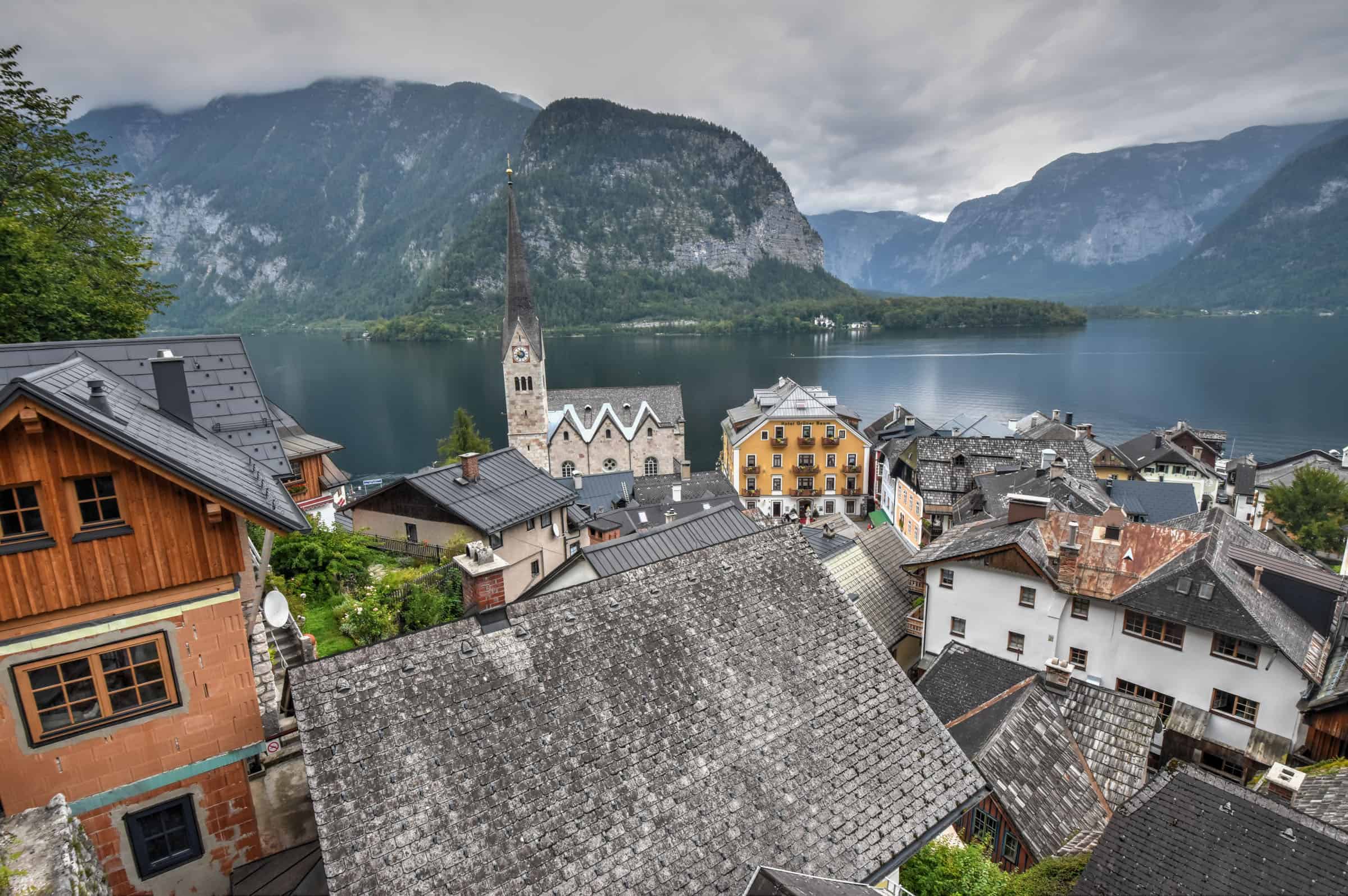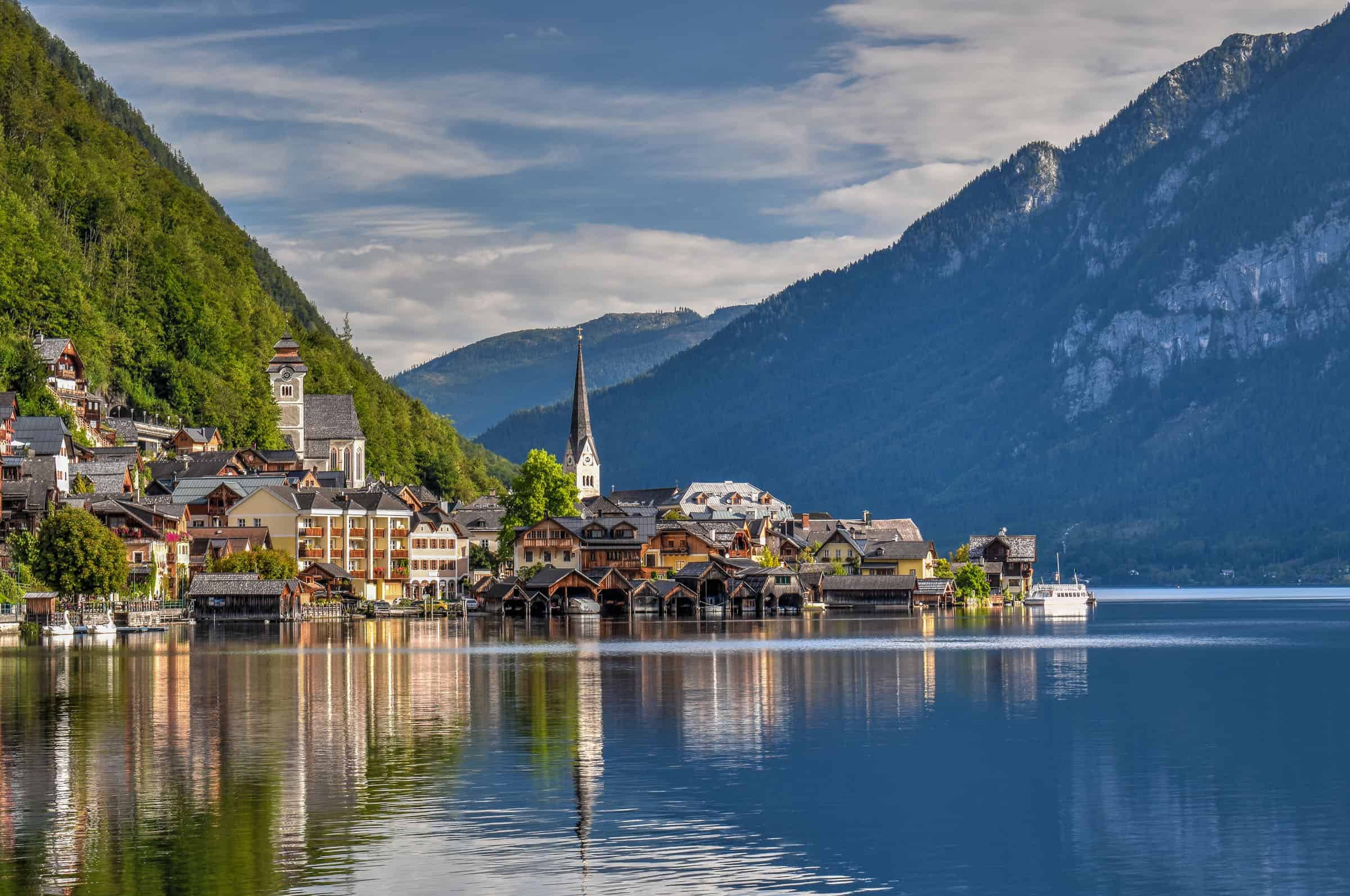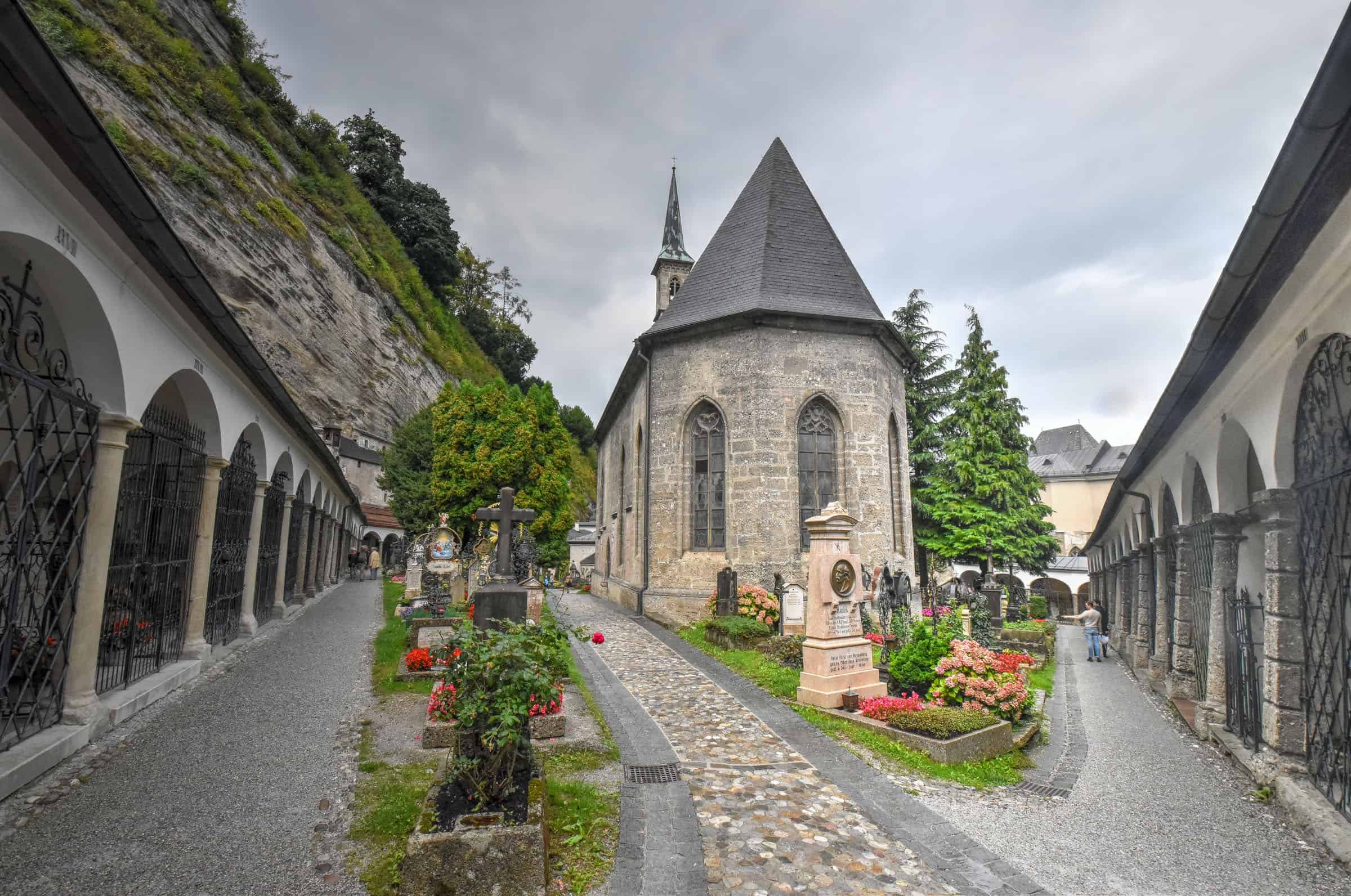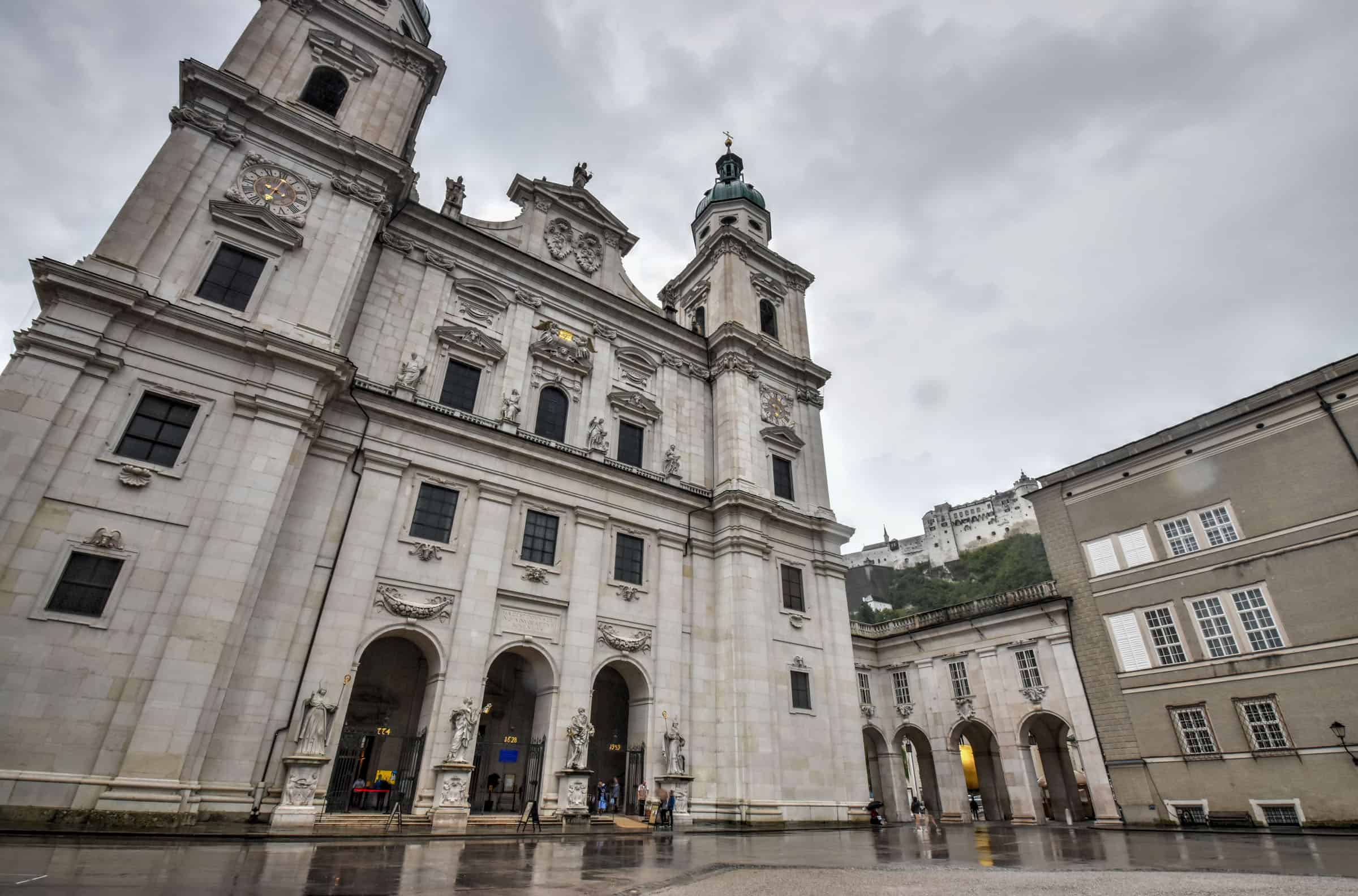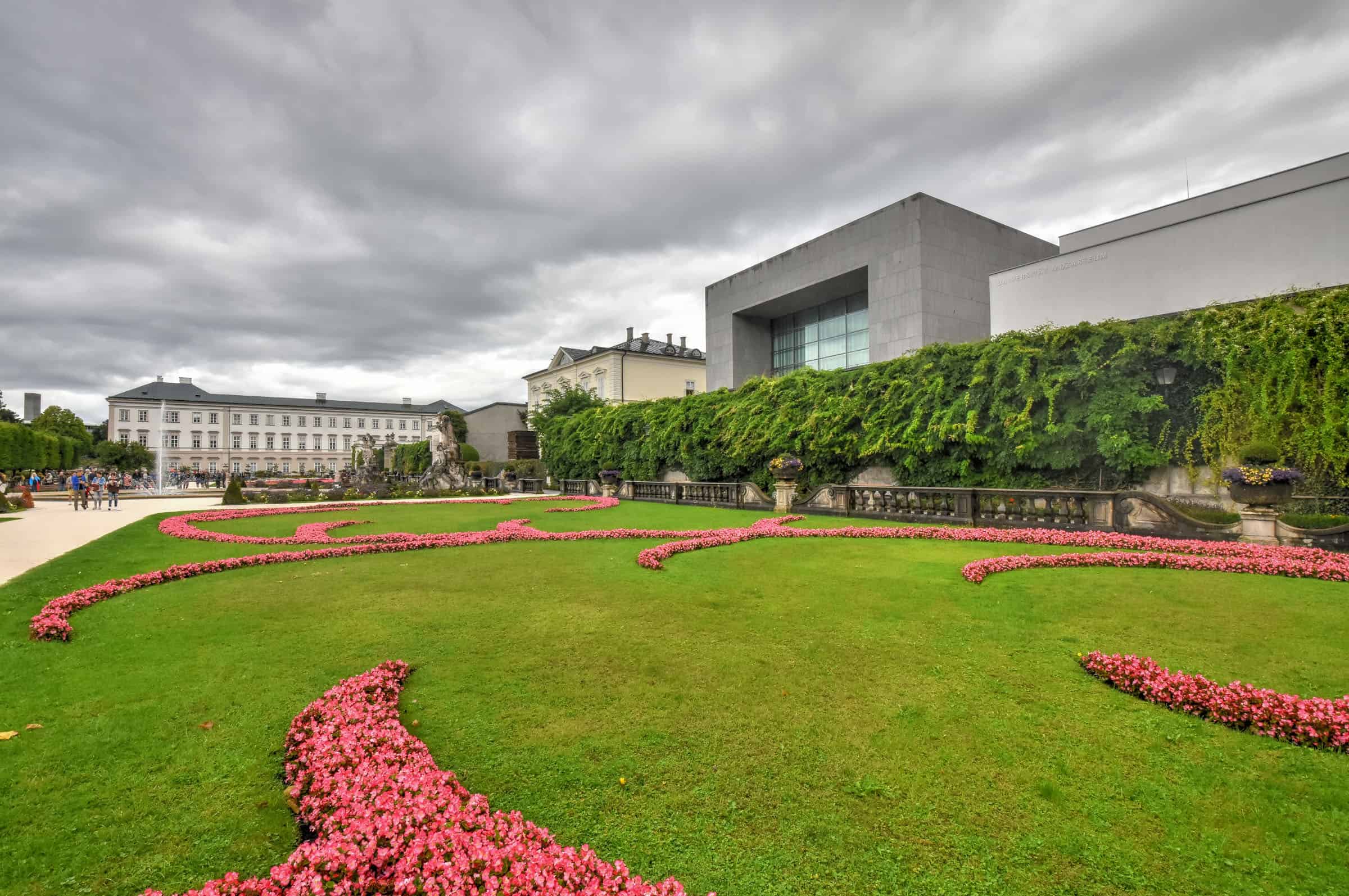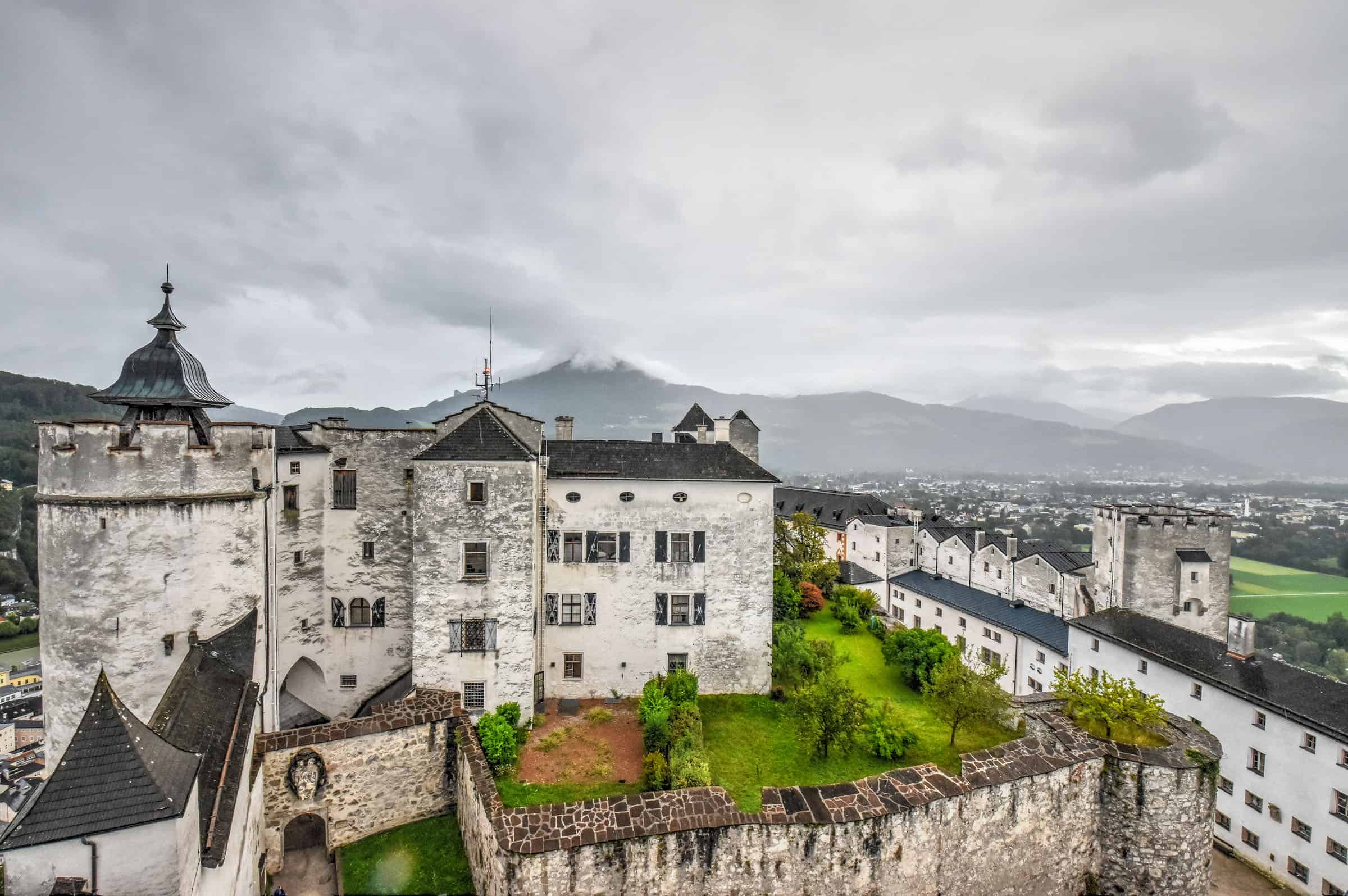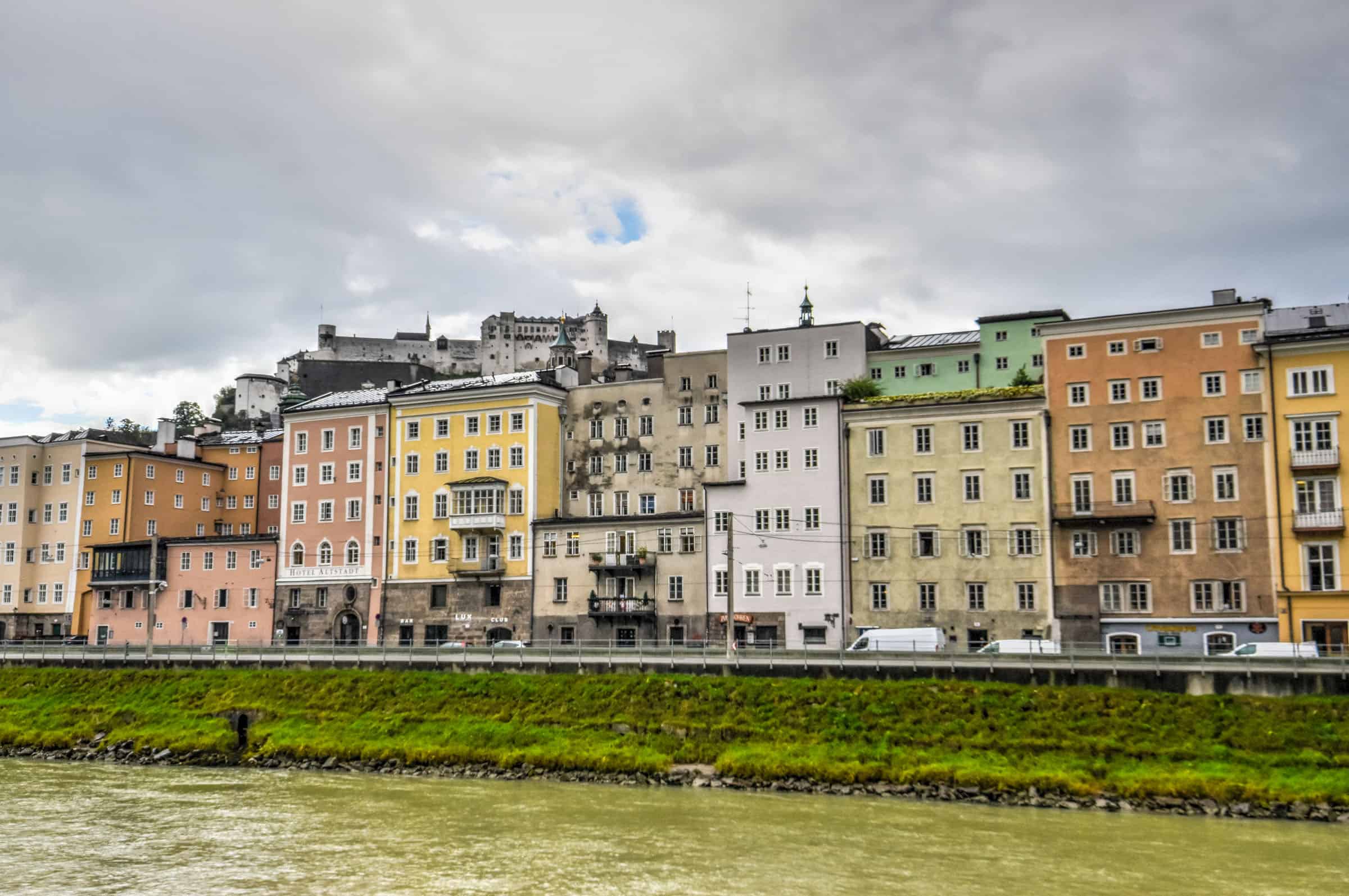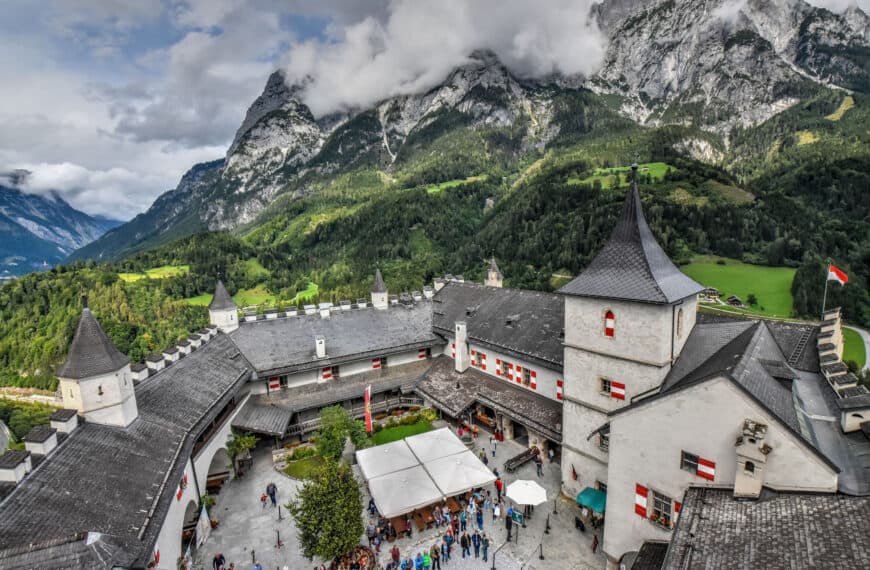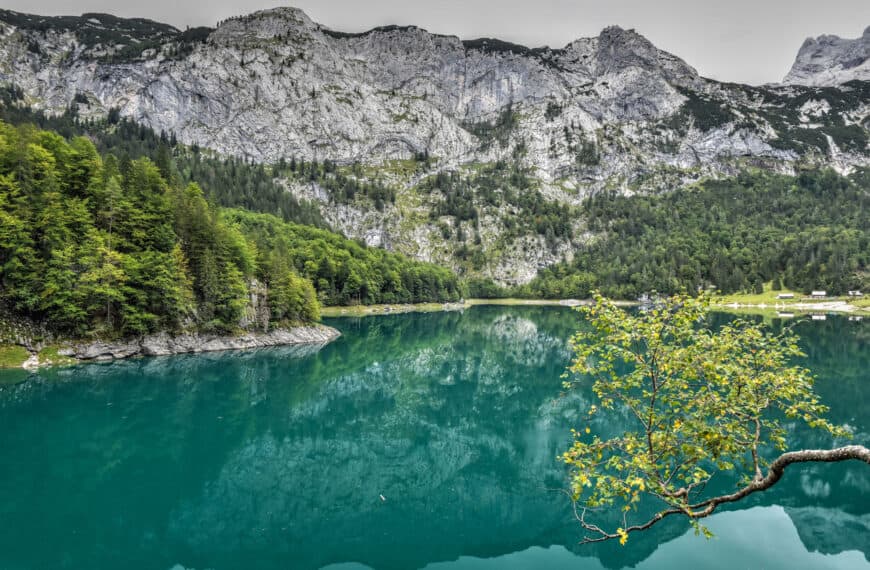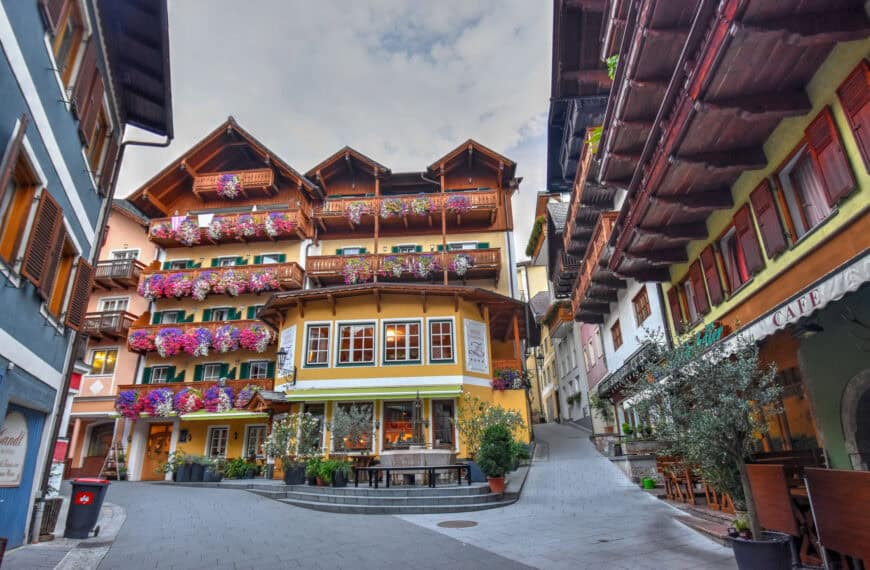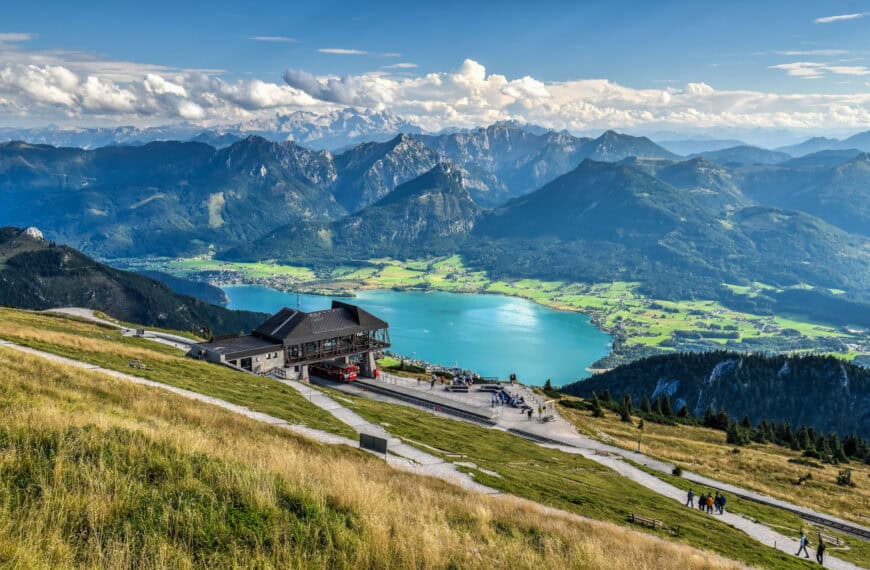Nestled in the southern portion of the beautiful Salzkammergut region of Austria, a short distance from Salzburg, the tiny village of Hallstatt has captured the imagination of many over the years. What was once a quiet place unbeknownst to most travellers has become a tourist hot spot since being listed as a UNESCO World Heritage Site in 1997 and several years later being named one of the most “Instagrammable” towns in the world. Hallstatt is a picture-perfect town that can get annoyingly crowded during the high season. Fortunately, there are times to visit when the village is less busy and there are also several nearby attractions to keep you busy elsewhere when Hallstatt becomes too crowded. To help you plan the perfect visit to this idyllic village and several nearby attractions, including the Hallstatt salt mine and Dachstein Krippenstein, we put together this travel guide on the Best Things to See and Do in Hallstatt
Disclosure: This page (Best Things to See and Do in Hallstatt) may contain product affiliate links. At no additional cost to you, we may receive a commission for purchases made through these links. More details can be found on our disclosure and policies page.
You might also be interested in these pages:
Best Things to See and Do in the Salzkammergut
Perfect Road Trip Itinerary in the Salzkammergut
Best Things to See and Do in Salzburg








Orientation – Hallstatt Location
Hallstatt is a small village located in the Upper Austria state of Austria. More precisely, it is located on the western shores of Lake Hallstatt’s (Hallstattsee) in Austria’s Salzkammergut region, known for its beautiful lake and mountain scenery.

There are many ways to get to Hallstatt, depending on your preferred mode of transportation and point of departure. Most options are best from Salzburg, the closest large city and one from which many visit Hallstatt as a day trip. Visiting Hallstatt as a day trip from Vienna is not impossible, but you are looking at 3-4 hours of transport each way, so it’s definitely not ideal. If that’s your only option, joining a group tour might be a good idea in this scenario to avoid the hassle of organizing all the transfers (there’s no direct public transport route to Hallstatt from Vienna) or spending such a long time at the wheel of your vehicle.
By Car: From Salzburg, it’s about a 1h15 drive (75km) to Hallstatt. From St Wolfgang, it’s about a 40-minute drive from Hallstatt (we based ourselves in St Wolfgang during our time in the Salzkammergut).
If you need to book a rental vehicle for your travels, we highly recommend using Discover Cars to get the best rates on your rental in Austria.
We also highly recommend Airalo (eSIM card) for your connectivity needs when travelling abroad. Airalo is the world’s first and largest eSIM store with eSIM plans for 200+ countries and regions worldwide.
Important: All Austrian motorways (“Autobahn”) and expressways (“S” roads) are subject to tolls. All cars, motorbikes and camper vans must either properly display a toll sticker or have purchased online a digital vignette when they plan to drive onto a motorway or expressway. Vignettes with periods of validity of 10 days, 2 months or 1 year are available from more than 6,000 outlets in Austria and neighbouring countries, and digital vignettes can be purchased from the ASFINAG website. They are not prohibitively expensive — for instance, the 10-day vignette for cars costs €11.50.
By Bus: You can reach Hallstatt from Salzburg by bus, but you’ll need to transfer twice and the route will take about 2h15 to complete. Bus 150 to Bad Ischl from Salzburg, then Bus 542 to Hallstatt Gosaumühle, and finally Bus 543 to Hallstatt Lahn. Check the OBB website for timetables and tickets.
By Train: This is the most scenic way to reach Hallstatt from Salzburg, but it isn’t the most time-efficient. The best route follows the side of the lake (Hallstattsee) on the opposite side from Hallstatt to Hallstatt Bahnhst station and takes about 2h30 with a transfer midway (the previous OBB bus hyperlink will also show various bus & train combo routes). From there, you’ll need to take a short ferry across the lake to Hallstatt. The Stefanie Ferry times its departures with the train arrival times (€ 3,50 (2024); cash only).
By Group Tour: This can be a great option if you don’t want to deal with the transit logistics while benefiting from a time-efficient direct route between Salzburg (or Vienna) and Hallstatt (see tour image links below).
By Private Tour:
Arrival by Car and Parking:
Parking can be a challenge in Hallstatt, as the lots fill up by mid-morning during the summer high season. It is recommended to arrive early in the morning (preferably before 9) to secure a spot.
There are two main car parks (P1 & P2) for those arriving in Hallstatt with their own vehicle. Parkplatz P1 is the main parking lot and is located a 5-to-10-minute easy walk from the village center. It is open 24 hours and the parking fees range from € 4 (1hr) to € 16 (full day). P2 is smaller, slightly closer to town, and is only open from 5 am to 10 pm (prices are the same as P1).
Two other car parks, Parkplatz P3 and Parkplatz P4 rarely fill up, but they are both located 2.5 km from the town, requiring a decent walk (25-30 min) along the road to make it into Hallstatt. There is a shuttle service (€ 2) connecting these car parks to Hallstatt during the summer, but there isn’t a specific schedule and there have been complaints of excessive wait times.
When to Visit Hallstatt
Season: Hallstatt has grown increasingly popular over the last few years, and as a result, the village becomes excessively crowded during the summer high season. To enjoy nice weather with fewer crowds, we would definitely recommend shoulder season (early June, September and early October – we decided to visit in mid-September, and still felt the village was getting quite crowded by the late morning).
That being said, the winter holiday season can also be a great time to visit even though some shops and attractions such as the salt mines and the funicular may be closed, as the scenery can be quite beautiful under a blanket of snow with several festive events and Hallstatt’s annual Christmas Market.
Time of Day: Regardless of when you visit Hallstatt, it’s best to come either early in the morning or in the evening, to avoid the midday rush of tour buses that unload hoards of tourists onto this beautiful lakeside village. If you decide to spend the night in Hallstatt, then that should be easy to accomplish. If you are visiting on a day trip, we recommend arriving early in the morning, around 8 am, both to secure a parking spot and to enjoy the peace and quiet while exploring the village. Once the crowds start to arrive, you can move on to nearby sights and attractions that are not in the village itself, such as the salt mines, the Skydeck or the attractions at Dachstein Krippenstein.
We believe that Hallstatt is definitely worth visiting, as it has a unique and charming beauty that you won’t find elsewhere. You simply need to plan and time your visit to minimize the negative impact that the crowds can have on your experience when visiting.
About Hallstatt
Hallstatt is a small village (with a permanent population of less than 1000 people) nestled between Hallstätter See and the steep slopes of the Dachstein massif, whose initial settlement dates back more than 7000 years and with a rich history of salt mining. The village is believed to be one of the oldest inhabited villages in Europe.
The Hallstatt salt mine is the world’s oldest working salt mine and comprises 21 levels and several smaller shafts ranging from 514 metres (1,686 ft) above sea level to an elevation of around 1,267 m (4,157 ft). During the Bronze Age (approximately 3300 to 1200 BC) salt production became day-to-day commercial activity in Hallstatt. Salt was produced in large quantities and the wealth that was generated is on display in the prehistoric cemeteries in Hallstatt.
Hallstatt is at the core of the Hallstatt-Dachstein/Salzkammergut Cultural Landscape declared as one of the World Heritage Sites in Austria by UNESCO in 1997. Today the village center is traffic-free and more than half a million visitors visit each year. Over-tourism is an issue in this idyllic lakeside village, with significant increases in the number of visitors since being named a UNESCO site and it became increasingly popular among East Asian tourists in 2006 when it was featured on a South Korean television show.
Best Things to See and Do in Hallstatt
Explore the Old Town
This is one of the most fun things to do in Hallstatt, especially if you do it early before the tour bus crowds start to arrive. On your way in or out of the village, you can admire dozens of elegant swans along the waterfront, near the wooden boat houses. Try to take your time to explore the village and not be one of those tourists who just come, take a few quick shots, and leave.



The village center is essentially just a main square and a main street that stretches for a few blocks, but several side streets are also worth exploring. The town’s layout, lakeside position, centuries-old timber homes and beautiful architecture make Hallstatt seem like the perfect setting for a fairytale.


Walk along the charming cobblestone streets, visit cute little shops, and stop at stalls selling all sorts of things, from handmade souvenirs to tasty local Austrian treats such as a flaky Apfelstrudel filled with cinnamon-spiced apples or a Sachertorte layered with apricot jam.



To enjoy beautiful viewpoints without the crowds, there are tons of little streets and stairs heading up the hillsides with fantastic panoramic views of the village and Hallstätter See, and the surrounding mountain scenery. In particular, we highly recommend walking along the village’s upper path (“Obere Weg”), which was renamed the Dr Friedrich Morton Weg in 1955. The short walk along this path will provide fantastic views of the surrounding scenery.
Shop Salty Souvenirs: Given Hallstatt’s rich history of salt mining, you can find a variety of unique salt-related souvenirs here. From gourmet salts infused with herbs and spices to decorative salt lamps, or skincare products made with Hallstatt salt, there is something for every taste and budget.
Visit the Hallstatt World Heritage Museum: This museum is packed with fascinating artifacts, old photos, and interactive displays about Hallstatt’s ancient past with a focus on its prehistoric roots and salt mining history.
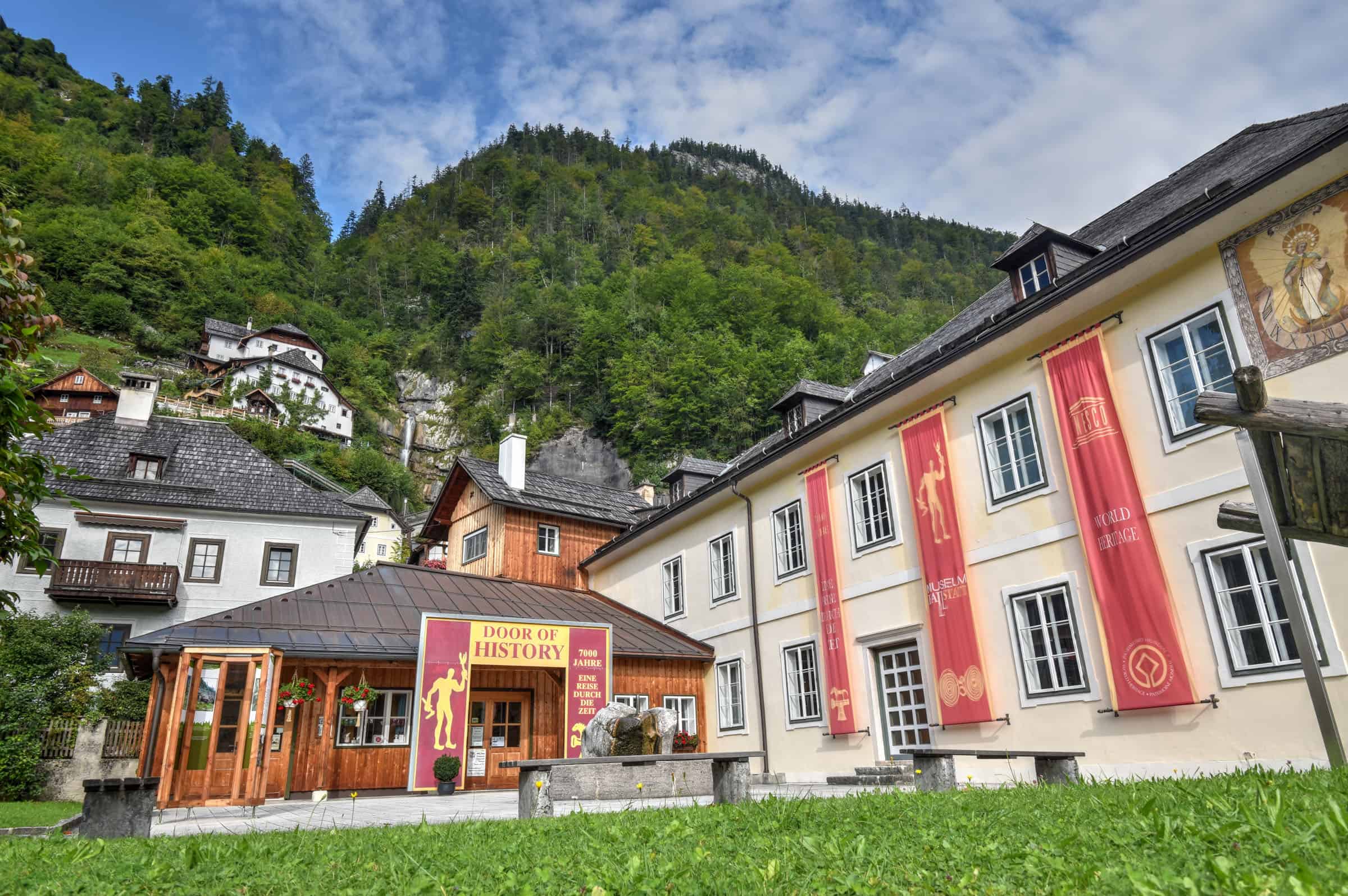
Visit a wood-working shop: There are several craft wood workshops in Hallstatt offering a variety of wood-carved souvenirs, such as Atelier Jirasek. Our favorite was Drechslermeisterei, located next to the popular Schnaps & Holz, where you can also see the tools and workshop of the woodworkers.
Visit the Hallstatt Cemetery and Ossuary
The Hallstatt Cemetery, next to the Pfarrkirche Mariä Himmelfahrt catholic church, occupies a prime vantage point, sitting on an elevated part of the village against the steep slope of the mountain behind it. It’s an incredible atmosphere cemetery and stunning views of Hallstätter See in the distance. The cemetery is quite small, but you still might want to linger to enjoy the views and visit the Hallstatt Charnel House (also called the Ossuary or the Bone House), a small chapel located at the back of the cemetery that boasts the largest collection of painted human skulls in Europe.



The Charnel House holds over a hundred painted skulls, neatly stacked along the walls with several hundred of them painted in bright colors with various symbols such as flowers and crosses. The skull tradition stems from the fact that, as Hallstatt’s cemetery filled, bodies were exhumed in order to make room for the more recently deceased and then stacked in the charnel house. Most of the skulls were painted towards the end of the 18th century and the identity of the deceased was commemorated with decorative inscriptions.
While the cemetery grounds are free to visit at any time, the Charnel House is only open from 10 am to 6 pm (daily).
Learn About the Hallstat’s History with a Guided Tour
A great way to gain a better understanding of Hallstatt’s salt mining tradition and the local traditions of its residents is to take a guided walking tour around the village. Moreover, your guide is likely to know the best places to go to avoid crowds while making sure you are discovering under-the-radar gems (see tour image links below).
Get Your Iconic Hallstatt Photography Shots
You have no doubt seen some of the picture-perfect shots of Hallstatt on social media and would like to know where they are. We already highlighted two great spots where you are less likely to near others taking the same picture: the cemetery and along the upper village path (Dr Friedrich Morton Weg).
If you are looking for those iconic viewpoints of Hallstatt, they are located on opposite ends of the village.
1-The first viewpoint is from a small park located just south of the village providing you with beautiful views of the village’s boathouse.



2-The second is located at the northern end of town, where you can get the iconic picture-perfect shot of Hallstatt lining the lake and the dramatic mountains towering in the backdrop.





3-Finally, great views are also to be had from this staircase, just off Mullerstiege Road.



4- For slightly more distant views of Hallstatt and a different perspective, you can get nice shots from this small island near the car parks.
Visit the Salt Mine
The oldest working salt mine in the world is here in Hallstatt. Salt has been mined here for thousands of years (7000 to be exact). Excavations of the mine have uncovered some surprising discoveries, including a completely preserved salt man found in 1734 (aka the salt mummy), tools from the Iron Age, and in 1838 workers found a pick from the Neolithic Age dating the salt mine back to 5,000 BC.
Getting to the mine: The fun begins even before you reach the mine, and that’s because the mine’s entrance is about 350 m above Hallstatt – to get there you’ll have to take a scenic funicular. The funicular is located here, near the location of Parkplatz P2, and takes about 2 minutes to reach the top. From there, a short 15-minute walk is required to reach the entrance of the salt mines.
Alternatively, you can also take a strenuous hike (about 1 hr (one-way), but very steep) instead of riding the funicular up. You will still have to add the additional 15-minute walk to reach the mines.
A funicular round-trip costs € 22 (2024), whereas a one-way trip costs € 12 (both options have reduced fares for children).
Touring the mine: The only way to visit the mine is with an organized tour, which typically lasts about 90 minutes. During this tour, you will learn about the history of the mine and the daily life of early workers, interact with some raw salt, climb the oldest wooden staircase in Europe, and slide down Europe’s longest wooden slide (64 m long).
We should also note that it’s relatively cool inside the mine, around 8C (46F) year-round. However, you will be provided with the tour miners’ overalls that should keep most people comfortable during the tour. But if you tend to feel chilly easily, you might want to pack an extra layer to wear.
Hours: The Salt Mine is closed for Winter from early January until late March. Guided tours are available from 9:30 am to 4 pm from late March to late October, and from from 9:30 am to 2 pm from late October to early January. The full schedule can be found here.
Fees: Salt-mine visits cost € 28 without the funicular and € 40 with the funicular (2024). Reduced rates for children. Tickets can be purchased ahead of time on the salt-mine website – it is recommended to do so to guarantee your preferred time slots.
If you enjoy salt mine visits, our favorite in the general area was the Berchtesgaden Salt Mine in Germany, about a 1h30-drive away from Hallstatt (or a 30-minute drive from Salzbug), near the beautiful Lake Königssee. There’s no funicular here, but there is a fun underground train ride, a long wooden slide and a boat ride on an underground lake.
Enjoy the views from the Hallstatt Skywalk
The salt mine isn’t the only thing to do from the top of the funicular. You’ll also find here the Hallstatt Skywalk: a glass viewing platform providing you with beautiful panoramic views of the region and of Hallstatt below. Accessing the Skywalk is free of charge if you decide to hike up. Otherwise, you will still have to pay for the use of the funicular to reach the Hallstatt Skywalk.
When the skies are clear, an even better viewing platform in our opinion is the 5 Fingers viewing platform located a few miles from Hallstatt (we will cover this attraction in greater detail below).
Get Out on the Lake (Hallstätter See)
Just east of Hallstatt lies the beautiful Hallstätter See, a massive lake stretching 8.5 km long and up to 125 meters deep. It’s long and narrow, surrounded by towering mountains, giving it a definite Norwegian Fjord look. In addition to admiring the lake from the shoreline, there are multiple ways to enjoy the lake from the water. Moreover, it’s a great way to escape the crowds during the busier mid-day periods.
For a do-it-yourself adventure, you can rent one of several electric boats, rowing boats, swan-shaped pedal boats, or stand-up paddle boards (SUP) (prices range from € 10 to € 30 depending on the type and duration). Rentals can be obtained from this location along the shoreline.
Alternatively, you can take a ride on the Stefanie Ferry, which connects Hallstatt to the train station across the lake. The ferry is inexpensive (€3.50) and performs a round trip almost once an hour to meet the incoming trains. The company also offers more tour options available in the summer, including a Southern lake tour (€ 15) that leaves 5 times a day between May and September.
How to Plan Your Day in Hallstatt
As beautiful and fairytale-like as Hallstatt is, it can quickly turn into a maddening experience without proper planning. If you arrive in the middle of the day during the summer high season, you might find Hallstaat a chaotic mess of tourists. But if you plan your visit accordingly, you can enjoy the village and the surrounding scenery with a certain level of serenity.
The best times to visit Hallstatt are in the early morning and late evening before the crowds arrive and after they have dissipated. If you are spending a night in Hallstatt, you should easily be able to achieve this. If you are visiting on a day trip, we suggest arriving early in the morning.
In our experience, it’s best to arrive in Hallstatt around 8 am (or earlier if you can), as the tour buses start to arrive in droves around 9 am. This should allow you some time to explore the village at your own pace in some relative peace and quiet. The village is quite small, so you should be able to cover most of it with some random exploration within an hour or two, especially if you venture off the main road regularly and visit some of the shops and museums. We would suggest finishing your Hallstatt visit with the Charnel House, which opens at 10 am. Afterwards, it’s time to make your way up the funicular to visit the Salt Mine and the Skywalk, which should take 2-3 hours to visit together.
After lunch, you’ll definitely want to escape the crowds, and you have a few options:
1) Get out on the lake with a boat rental
2) Visit the Dachstein mountains, particularly the Dachstein Ice Caves and the 5-fingers viewing platform on Mount Krippenstein. (a 10-minute drive away, see below for more information)
3) Visit the Gosau Lakes (a 30-minute drive away, see below for more information)
If you would like to visit the Dachstein mountains and return to Hallstatt later without losing your parking spot, you can use public transit to reach the Dachstein Krippenstein cable car station (the start point for visiting both the Ice Caves and the 5-fingers viewing platform). You simply need to take bus 543 from Hallstatt.
Where to Stay in Hallstatt
Although we prefer to stay in St-Wolfgang when visiting the Salzkammergut, as detailed in our guide on Where to Stay in the Salzkammergut, we can still provide a few options if you have your heart set on staying in Hallstatt. These are in our opinion the best mid-range accommodation options:
I da Mitt – A charming and cozy B&B near the center of Hallstatt
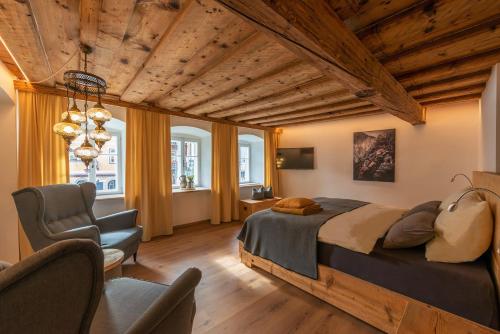

Heritage Hotel Hallstatt – Rustic Hotel housed in three historic townhouses with waterfront views

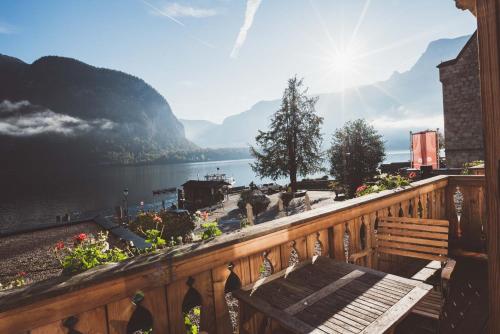
Weisses Lamm – Spacious rooms with modern and sleek design

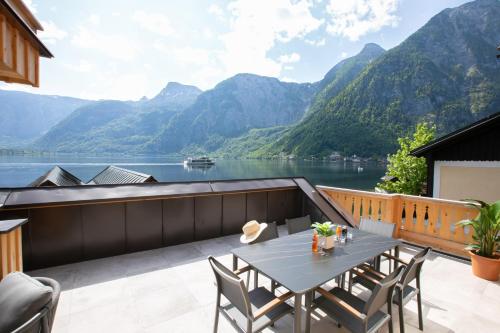
What to do near Hallstatt
Visit the Dachstein Ice Caves (Dachstein Krippenstein)
Located in the Krippenstein Mountain Range, the Dachstein Ice Caves are one of the few places on Earth where tourists can easily access giant-sized ice caves. The first sections of the Dachstein Ice Cave were discovered in 1910 and tourist access began only 2 years later. The ice in the cave is formed by water seeping from the Dachstein plateau down into the cave through various small cracks. When outside temperatures are above freezing the caves still contain really cold air, so the penetrating water freezes and forms rather splendid ice shapes. Although some water flow in the summer is warm enough to produce slight melting, it actually balances the winter growth, enabling a cycle of slight melting with growth that guarantees the survival of this magnificent natural phenomenon.





For more information on this attraction, check our Travel Guide on visiting the Dachstein Ice Caves.
Visit the 5 Fingers Viewing Platform (Dachstein Krippenstein)
Dachstein Krippenstein Mountain is accessible via cable car transport. Beyond the base station, the mountain is serviced by three stations. Whereas the Giant Ice Cave is near the first mountain station, the 5 Fingers Viewing Platform is a short hike from the second mountain station. The 5 Fingers viewing platform offers an incredible adrenaline rush as you lean over a 500m drop below you. Built in 2006, this platform, as its name suggests, is shaped like a hand with 5 fingers and protrudes from a sheer rock face at an altitude of 2108 meters above sea level. It offers breathtaking views of the Salzkammergut region from above Lake Hallstatt and the Krippenstein Mountain Range.





For more information on this attraction, check our Travel Guide for Visiting the 5 Fingers Viewing Platform.
Visit the charming town of St Wolfgang and the Steepest Cog Railway Train
Located along the shores of Lake Wolfgangsee in the heart of the Salzkammergut, Austria’s beautiful lake district, the small town of St Wolfgang deserves to be discovered. Though many come to town to experience the unique cog train (Austria’s steepest cog railway–the SchafbergBahn) that whisks passengers to the summit of Schafberg Mountain, there’s so much more to experience in St Wolfgang. In particular, it has a beautiful, colorful and lively town center filled with cafés, shops and restaurants, but without the crowds of Hallstatt, and has several beautiful lakeside walking trails.






For more information and tips on visiting St Wolfgang, check out our travel guide on the Best Things to See and Do in St Wolfgang.
Go Hiking in the Stunning Gosau Lakes Area
The Gosau Lakes (often referred to as Gosauseen) are one of few exceptions in the Salzkammergut: most lakes have roads along at least one of the shores but here there are no such roads, only hiking trails, providing you with a much more serene lakeside experience. There are several options here including just looping around the first lake or a longer out-and-back trail with more elevation gain that takes you past three lakes. The area was definitely one of the most beautiful we visited in the Salzkammergut region, let alone Austria. The lakes are also a popular destination for Via Ferrata amateurs, swimmers, divers and those who want to explore the largest of the three lakes by pedal boat paddle board.





For more information on this attraction, check our Gosau Lakes Hiking Guide.
Visit Salzburg
Given Salzburg’s proximity to the Salzkammergut, it makes definite sense to visit this historic baroque town during your stay in the region. While many visit the Salzkammergut as day trips from Salzburg, many others do the opposite and visit Salzburg as a day trip from their base in the Salzkammergut.
Tucked away between scenic alpine landscapes near the German border and UNESCO-listed since 1997, the city has what many think is the best-preserved Baroque Altstadt (old town) and one of Europe’s best-preserved medieval castles towering above it. From the Sound of Music to Mozart’s childhood, the city has a rich cultural history and plenty of stories to share. Although the historic old town is fairly compact, its packed with attractions, museums and things to do. You can easily spend a full day here, if not more. The castle alone is worth a few hours.






For more information and tips on visiting this beautiful city, check out our travel guide on the Best Things to See and Do in Salzburg.
Planning a Trip to Austria?
You might be interested in these pages (coming soon):
Best Things to See and Do in the Salzkammergut
Perfect Road Trip Itinerary in the Salzkammergut
Best Things to See and Do in Salzburg
Best Things to See and Do in Hallstatt
We also highly recommend these guidebooks:
Rick Steves Vienna, Salzburg & Tirol
Lonely Planet Austria
Photography Gear
If you like our photography, you might be interested in some of the gear we use to shoot our travel and hiking destinations.
Camera Body – Nikon Z 6ii Fx-series Mirrorless Body
Main Lens – NIKON 24-120mm F/4G ED VR AF-S
Zoom Lens – Sigma 745-306 150-600mm f/5-6.3
Polarizing filters – Urth Circular Polarizing (CPL)
Camera Tripod – K&F Concept 64-inch Camera Tripod
Mini-tripod – Lammcou Flexible Camera Tripod
Camera/hiking backpack – Vanguard Alta Rise 48 Backpack
Universal Travel Adapter – VYLEE Universal International Power Travel Plug
Other Travel Essentials
Travel Insurance
SafetyWing is a travel insurance company that offers comprehensive coverage for travellers. Includes Medical Insurance and Travel Insurance. Primarily geared towards long-term travellers, digital nomads, and expats.
e-Sim cards
Airalo is the world’s first and largest eSIM store with eSIM plans for 200+ countries and regions worldwide. With Airalo eSIMs, travellers can get connected the moment they land at their destination and avoid nasty data roaming charges
eSIMS are a sustainable alternative to single-use SIM cards – they are 100% digital, require less energy to produce and be re-used rather than disposed of.
Car Rentals
Discover Cars is our go-to website for car rentals. We almost always find our preferred rate there.
Transfer from Airport
Welcome Pickups is our favourite private transfer service, which you can pre-book at a fixed price. Currently available in 220 cities all over the world (mostly in Europe, but with several major cities in Asia, the Middle East and the US).
Kiwitaxi is another private transfer service – we haven’t tried it yet, but it’s currently available in a few more countries (102 as of 2024).
Hotels and Accommodations (coming soon)
Photography Prints
If you found this blog useful, you can help support our blog by purchasing low-cost digital prints. Printed physical prints are also available for purchase.








—–
Well, that wraps it up! We hope you enjoyed our Guide to the Best Things to See and Do in Hallstatt and that it will prove useful for planning your trip.
—–
You might also be interested in these related pages:
